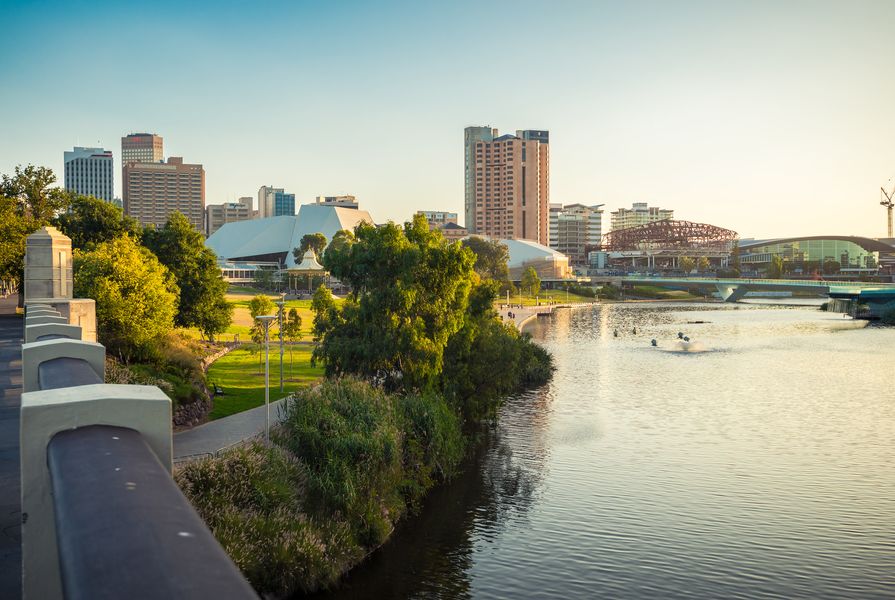The South Australian government and Adelaide City Council have pledged their support to a national campaign to increase green spaces in Australia’s cities in a bid to combat rising urban temperatures.
Last month the state government’s Department of Environment, Water and Natural Resources and Adelaide City Council partnered with 202020 Vision to present a one-day masterclass investigating how to increase the state’s living infrastructure, focusing specifically on heat, health, design and economics.
The 202020 Vision is a collaborative campaign set up in 2013 by Nursery and Garden Industry Australia and Horticulture Innovation Australia to increase Australia’s tree canopy cover by 20 percent by the year 2020.
The 202020 Vision tours the country, bringing together urban greening experts, key stakeholders, academics and members of local and state governments to formulate urban forest strategies. Masterclasses have previously been held in Sydney, Canberra, Perth and the Sunshine Coast.
Climate resilience is a prime concern for South Australia, a state that is regularly hit by heatwaves and bushfires and is currently experiencing a one-in-20-year flood. According to the federal government’s Department of Environment and Energy, an estimated 200 people over 65 die annually in Adelaide from heat-related deaths (1997–1999 average), which is predicted to rise to between 342 and 371 by 2020, and between 482 and 664 by 2050.
In 2014 the United Nations’ World Meteorological Organization declared Adelaide to be the hottest city in the world.
One of the speakers at the masterclass was Huade Guan, associate professor at the School of the Environment, Flinders University. According to Guan, who has researched heat maps of Adelaide, summertime temperatures can vary by four degrees Celsius across the city on a 35 degree day. Suburbs with an extensive urban tree canopy are generally two degrees cooler than suburbs with less canopy cover.
An avenue of giant Ficus macrocarpa var hillii in Sydney’s Hyde Park.
Image: Courtesy of 202020 Vision
“Adelaide has good conditions for using urban forests to cool temperatures – the air is dry in summer so it is easy to evaporate water to cool down temperatures. This is different from cities such as Hong Kong, Singapore or Tokyo, if they want to cool their tempatures through evapotranspiration in summer, it is very difficult because of humidity.”
But it’s not just a matter of planting lots of trees, says Guan.
“We found parkland irrigation can cool urban temperature by one or two degrees. And we are very lucky in Adelaide because we have a plentiful source of water [for irrigation] through stormwater, and we have many water recycling opportunities.”
However Lisa Edwards, principal at Perth-based consultancy City Canopy, believes many local government areas are actually slipping backwards in terms of total tree canopy cover, despite what they spruik publicly.
“What’s happening in the City of Sterling in Perth, for example, is they are planting thousands of trees every year yet canopy cover is going backwards. This is the case for many councils around the country that are experiencing significant infill development.”
She argues that the most important step in reducing the urban heat island in cities is introducing stricter regulation on the removal of large vegetation on privately owned sites, particularly development sites.
“No matter what local governments are doing in regard to new trees, it all depends on local and state governments getting strict about retaining large trees on private property.”
She also believes large trees have a public relations problem. “Nobody plants big trees, people are scared of them. Even insurance advertisements are offering discounts to people who don’t have large trees in their backyards.”
“There is far greater risk placed on trees compared to their real risk,” says Edwards.
According to climate analysis by NASA, 2016 will surpass 2015 as the hottest year on record, with each month to June recorded as the warmest respective month globally in the modern temperature record, which dates back to 1880.
Organizers from 202020 Vision say representatives from South Australia Water, Adelaide City Council, Department of Planning and Transport, Department of Environment, Water and Natural Resources, the University of Adelaide, the Australian Institute of Landscape Architects, Flinders University, City of Charles Sturt and the minister for Sustainability, Environment and Conservation attended the masterclass in Adelaide.
Now almost four years old, the 202020 Vision began its mission to increase tree canopy cover in Australian cities by conducting a national survey of green space, which it published in a free report titled Where are all the trees? (2014). In another report co-developed with the City of Melbourne and the Victorian Government, the How to Grow an Urban Forest guide identifies the challenges that local governments face when it comes to expanding their urban forests, such as communication between council departments, communication with external stakeholders, gathering useful data, engaging with communities and overcoming the traditional value paradigms that exist within local governments.
The City of Melbourne’s key insights were shared with South Australian councils to encourage further commitment to growing urban forests in South Australia.
Read Barbara Schaffer’s article on urban forest strategies here.














